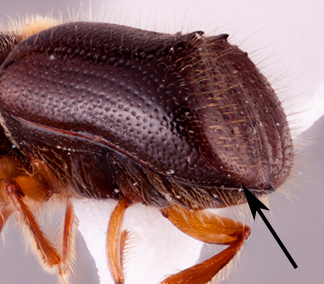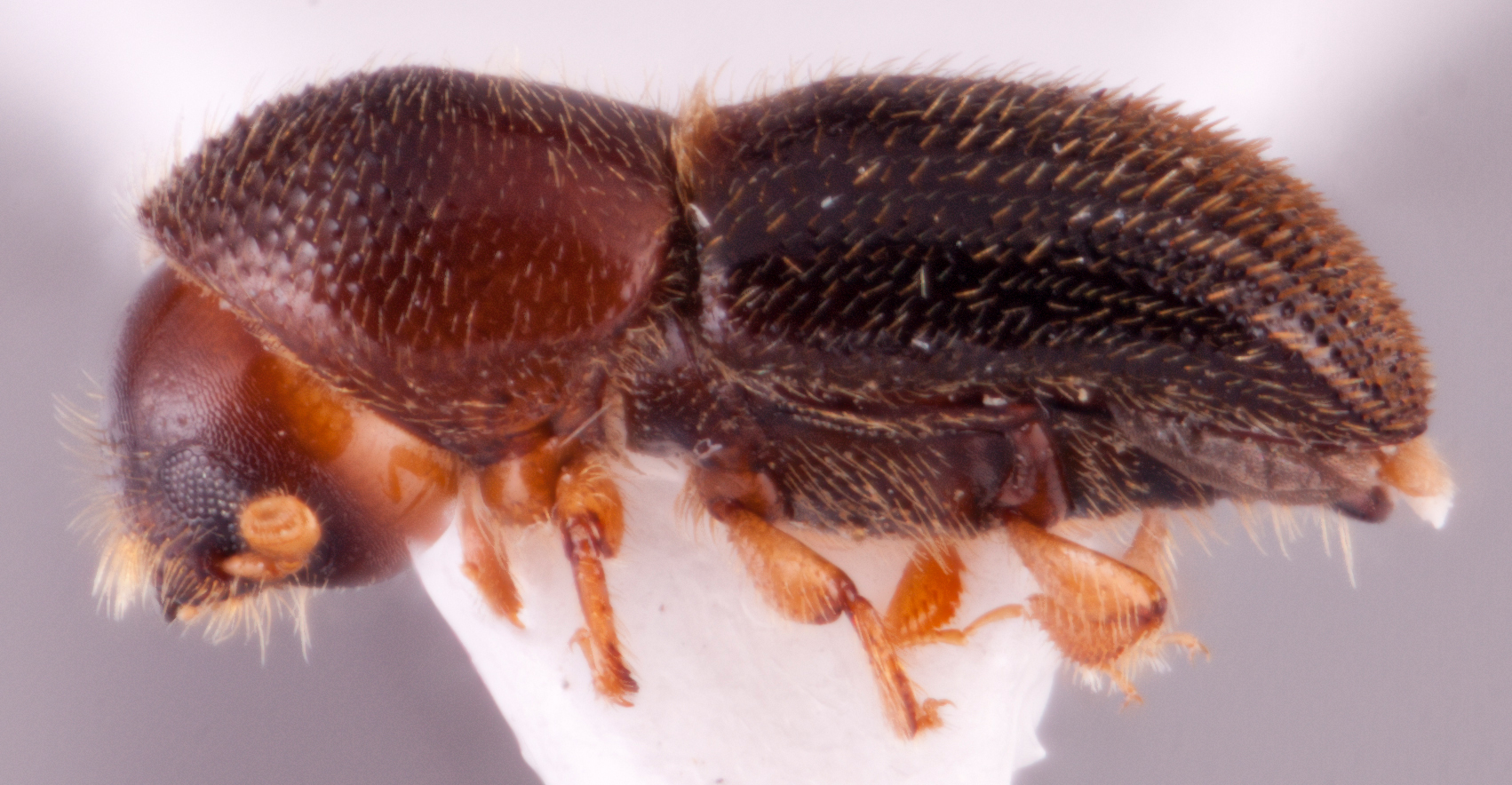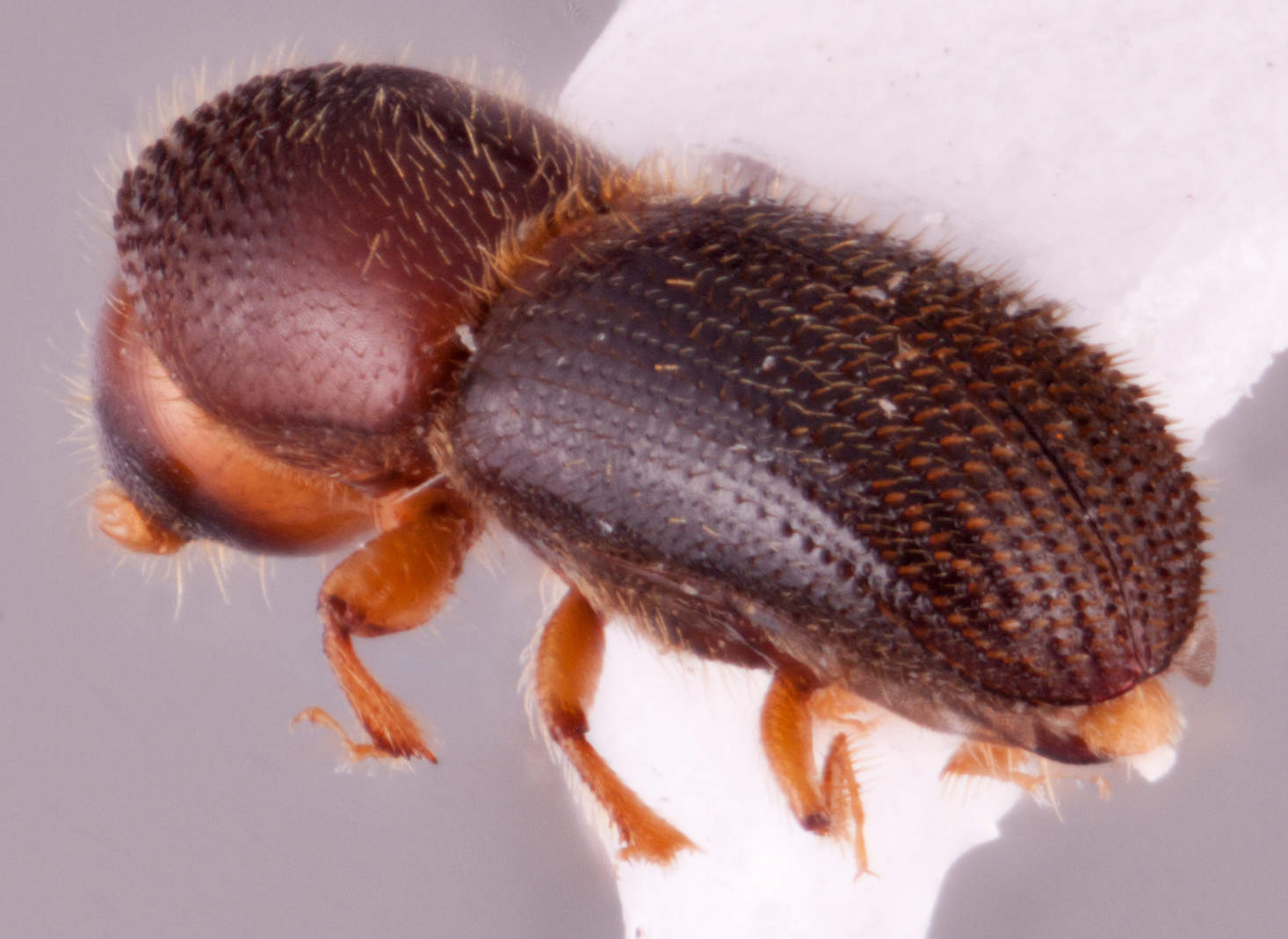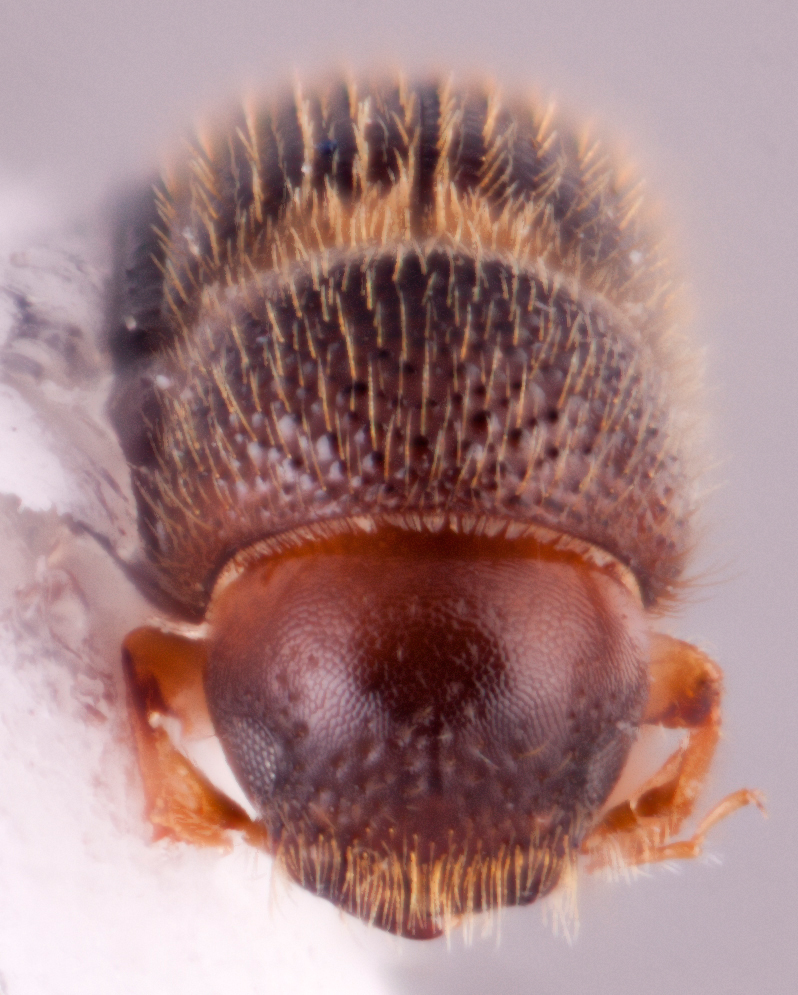Microperus kadoyamaensis
|
Microperus kadoyamaensis lateral; R.K. Osborn |
|
Microperus kadoyamaensis dorsal; R.K. Osborn |
|
Microperus kadoyamaensis declivity; R.K. Osborn |
|
Microperus kadoyamaensis frontal; R.K. Osborn |
Taxonomic history
Xyleborus kadoyamaensis Murayama, 1934: 290.
Microperus kadoyamaensis (Murayama): Hulcr et al., 2007: 580.
Synonyms
Xyleborus denseseriatus Eggers, 1941b: 225. Smith et al. 2020b: 289.
Xyleborus nameranus Murayama, 1954: 194. Smith et al., 2018b: 396.
Xyleborus pubipennis Schedl, 1974: 263. Smith et al. 2020b: 289.
Xyleborus huangi Browne, 1983b: 34. Beaver, 2011: 285.
Diagnosis
1.8−2.0 mm long (mean = 1.92 mm; n = 5); 2.86−3.17 times as long as wide. This species is distinguished by the declivitaldeclivital:
pertaining to the elytral declivity
interstriae densely covered with short semi-erect scales; elytralelytral:
pertaining to the elytra
discdisc:
the flat central upper surface of any body part (e.g. pronotum and elytra) medially convexconvex:
medially convexconvex:
appearing rounded , appearing humped; elytralelytral:
, appearing humped; elytralelytral:
pertaining to the elytra
declivitydeclivity:
downward slope of either the pronotum or elytra
 long, gradual; all declivitaldeclivital:
long, gradual; all declivitaldeclivital:
pertaining to the elytral declivity
interstriae uniformly granulategranulate:
pertaining to a coarse, grainy surface texture
 from basebase:
from basebase:
point or edge closest to the body; opposite of apex to apexapex:
to apexapex:
point or edge furthest from the body; opposite of base
 ; declivitaldeclivital:
; declivitaldeclivital:
pertaining to the elytral declivity
face convexconvex:
appearing rounded ; and posterolateralposterolateral:
; and posterolateralposterolateral:
relating to end of the side part/portion
 costacosta:
costacosta:
elevated ridge that is rounded at its crest, not necessarily with sharp appearance granulate.
granulate.
May be confused with
Microperus diversicolor, M. minax, and M. quercicola
Distribution
China (Fujian, Guangdong, Guangxi, Hong Kong, Hunan, Jiangxi, Yunnan, Zhejiang), Japan, South Korea, Laos, Taiwan, Vietnam
Host plants
polyphagous, attacking both gymnosperm and angiosperm trees (Beaver and Liu 2010Beaver and Liu 2010:
Beaver RA, Liu L-Y. 2010. An annotated synopsis of Taiwanese bark and ambrosia beetles, with new synonymy, new combinations and new records (Coleoptera: Curculionidae: Scolytinae). Zootaxa 2602: 1-47. https://doi.org/10.11646/zootaxa.2602.1.1)
DNA data
Sequences available for COI and CAD.





